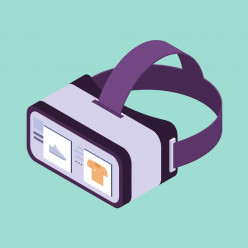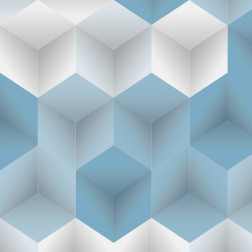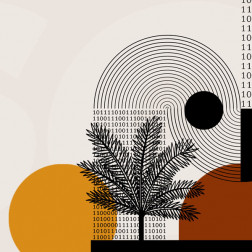
Middle East Digital Retailers Embrace Immersive Technology
From virtual reality to holographic displays and augmented reality experiences, immersive technology is reshaping digital retail in the Middle East.
Once considered an expensive fad, immersive technology is fast becoming a must-have for online retailers, offering increased interaction and engagement with customers.
Recent research by Ipsos and social media app Snapchat, predicts over 65 per cent of the UAE’s population and almost all of those using social media apps in the region, will be frequent augmented reality users by 2025.
While 94 per cent of brands polled saw AR primarily as a feature for fun, only 46 per cent of consumers agreed, with shopping cited as the number one reason they used it.
Improved engagement only skims the surface of the benefits, with digital retailers also seeing an increase in sales and drop in waste and returns.
Here, SQLI looks at some of the immersive technology being used in the region today and how SQLI can help your brand navigate this growing innovative landscape.
Transport products into the home digitally, with AR
Augmented reality (AR) is a technology where digital information is overlayed onto the real world, in real-time, creating a hybrid environment.
Many consumers are likely to have come across AR through the filters on social media apps such as Instagram, Snapchat and TikTok, where users can give themselves cartoon faces, for example, that move in-sync with their own.
However, AR is fast becoming an essential tool for digital retailers too.
With dozens of bricks and mortar stores across the Middle East, in markets including UAE, Bahrain, Qatar and Kuwait, Sephora’s AR features have won it legions of fans.
Virtual Artist, developed in partnership with AR company ModiFace, allows customers to scan their faces using an app, suggesting the most compatible make-up shades through the use of AI and then showing what the products would look like on. In true omnichannel fashion, customers can then buy them online or pick up in-store, before sharing their designs on social media in an instant.
Last year, SnapChat struck up deals with brands including Puma, Nike and L’Oréal, allowing Middle East users to virtually try on different clothes and make-up using its AR tool.
From what a watch will look like on a wrist, to how a sofa would look in your living room, AR is being used by retailers to showcase their products in innovative new ways.
Incorporating AR technology, is not only helping brands increase sales, but is often leading to less returns, with customers more likely to be happy with products bought online they have been able to try on virtually first, than making a purchase based on photos, alone.
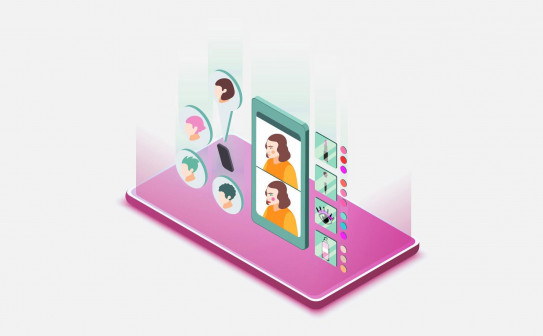
Virtual reality takes consumers to another world
Virtual reality immerses users in a digital, three-dimensional world, replacing the awareness of the real-world, often using headsets that track their movements.
From allowing access to stores or businesses virtually, to giving shoppers an immersive virtual experience to learn more about products, more digital retailers are harnessing its potential.
Emirates Airlines has its own VR app allowing passengers to take a tour of the plane cabin remotely, before offering virtual tours of Dubai hotels.
From the Dubai Aquarium and Underwater Zoo, to the Grand Souk in Al Ras and Abu Dhabi’s Yas Island, businesses are queuing up to give consumers the chance to explore them virtually first, often helping them to plan their real-life trip ahead.
Dubai is also forging ahead with its plans to become one of the global leading Metaverse economies, with the launch of MENA’s first Metaverse Academy in Riyadh, Saudi Arabia, promising to train up thousands of students in the Metaverse and related fields.
Last year, luxury goods retailer the Chalhoub Group entered the Metaverse when one of its companies – French brand Christofle – launched its first NFT collection housed in the virtual space called The City of Christofle Silversmithing.
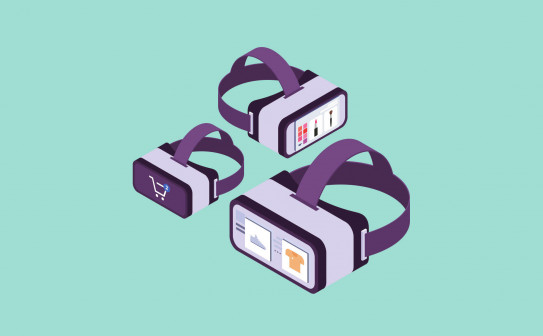
The best of all worlds, with mixed reality
Mixed reality can transition experiences between augmented and virtual reality, allowing businesses to engage with audiences in exciting new ways.
Digital retailers are placing digital objects such as holograms, in the real world, to appear as though people or objects are there in real time.
Last year, Dubai’s Al Habtoor Theatre launched the Dubai Hologram Universe - a series of hologram concerts featuring legendary artists in hologram form accompanied by a live band.
Earlier this month, Emirates Group unveiled its new Innovation Majlis, a platform to showcase and encourage research in the latest in tech innovation, including 3D holographic displays with generative AI.
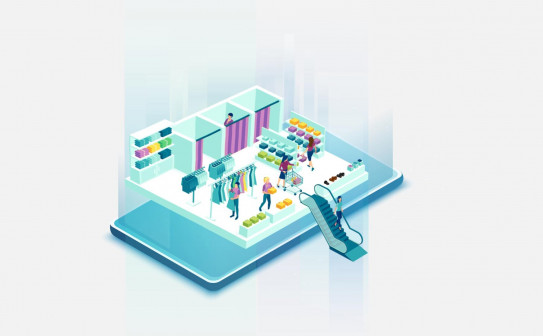
How SQLI can help your business incorporate immersive technology
With expert designers and developers, SQLI has the capabilities to bring your immersive projects to life.
Our experts are able to work with you to create stunning virtual realms that can help you engage with your customers in innovative new ways and enhance the customer experience like never before.
Ignasi Onate, SQLI e-Commerce Team Lead, and one of the leaders of SQLI’s immersive projects, said: “AR and VR in particular, bring customer experience to a whole new level. You can showcase your products in different ways, helping customers understand the depth and size of them. You can create virtual worlds, allowing users to immerse themselves in your brand.
“While VR in particular has been fairly slow on the uptake, I believe we are going to see a rapid rise in the overall adoption and use of this kind of content – especially with the recent launch of the Apple Vision Pro – Apple’s high-tech glasses.
“It’s important for brands to engage with customers where they want to be and in ways that innovate, especially if they want to be relevant in the near future. In many cases, they have some amazing content and good quality images, videos and photographs that can be incorporated into the development.”
